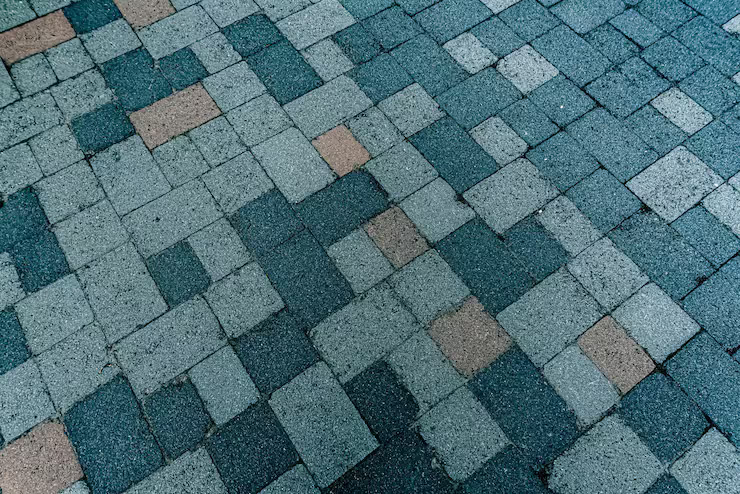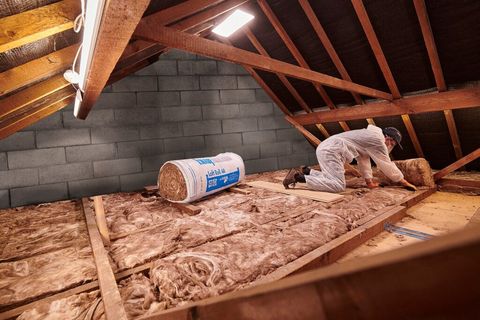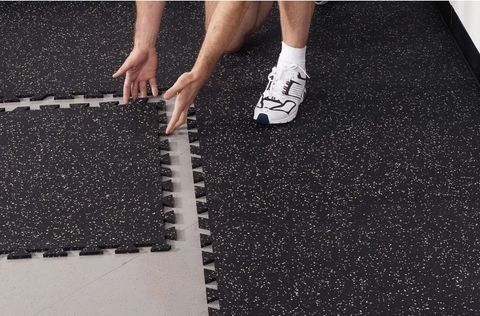The concept of “easy-to-install” rubber tiles addresses a growing need for quick renovation solutions that don’t require professional help. With interlocking designs, peel-and-stick formats, and modular systems, even beginners can install these tiles without complex tools or adhesives.

Importance
Rubber tiles matter today because they offer a blend of safety, comfort, and sustainability—qualities increasingly prioritized in modern design. Here’s why they’ve gained importance across different environments:
-
For Homeowners: Rubber tiles create slip-resistant surfaces in kitchens, garages, and playrooms while being simple to clean and maintain.
-
For Businesses: Gyms, offices, and workshops prefer them for sound insulation, durability, and quick replacement in case of damage.
-
For the Environment: Many tiles are made from recycled rubber, reducing landfill waste and promoting eco-conscious construction.
The ease of installation also reduces labor costs and downtime. Whether it’s a fitness studio or a home gym, these tiles can transform a space within hours.
Recent Updates
The rubber flooring market has seen notable innovation in the past year:
| Trend | Description | Impact |
|---|---|---|
| Eco-Enhanced Materials (2024) | Manufacturers are using recycled tires and sustainable binders for greener products. | Supports environmental goals and green certifications. |
| Smart Texture Design (2024) | New surface patterns enhance traction and reduce wear. | Increases safety and extends tile lifespan. |
| DIY Installation Growth (2025) | The home improvement market reports over 30% growth in self-installation flooring projects. | Encourages use of easy-to-install rubber tiles. |
| Acoustic Insulation Technology | Thicker rubber tiles with layered foam improve noise absorption. | Ideal for urban apartments and offices. |
These innovations show how rubber tiles are adapting to changing consumer preferences for comfort, sustainability, and aesthetic versatility.
Laws or Policies
While rubber tiles are generally unregulated as a product category, they are influenced by building, safety, and environmental standards in most countries.
Key regulatory aspects include:
-
Fire Safety Standards: In many countries (e.g., the U.S., EU, and India), flooring materials must meet fire-resistance ratings under building codes such as ASTM E648 or EN 13501.
-
Slip Resistance Requirements: Commercial spaces like gyms and childcare centers often need certified slip-resistant flooring as per local occupational safety guidelines.
-
Environmental Regulations: The use of recycled rubber is encouraged through green building programs like LEED (Leadership in Energy and Environmental Design).
-
Indoor Air Quality (IAQ): Certain jurisdictions require low-VOC (Volatile Organic Compounds) flooring materials to reduce harmful emissions indoors.
Understanding these standards ensures that the rubber tiles used are compliant, durable, and safe for occupants.
Tools and Resources
Choosing the right rubber tiles depends on factors like size, thickness, surface texture, and installation type. Here are some useful tools and resources to simplify decision-making:
Online Calculators and Design Tools
-
Rubber Flooring Calculator (RubberFlooringInc.com): Estimates tile quantity and cost based on room dimensions.
-
Floorplanner.com: Lets you visualize how rubber tiles will look in a 3D layout of your space.
Installation Aids
-
Tile Interlock Cutters: Helps customize edge fits for corners and walls.
-
Adhesive-Free Lock Systems: Brands like Greatmats and Regupol offer snap-in options that don’t require glue.
Product Resources
-
Eco-Flex Recycled Rubber Tiles: Known for sustainable materials and durability.
-
American Floor Mats Rubber Tiles: Offers variety in texture and color for both residential and gym applications.
-
Armstrong Flooring: Provides commercial-grade tiles suitable for high-traffic areas.
Maintenance and Safety Resources
-
EPA Indoor Air Quality Guidelines: Ensures proper ventilation and VOC control in indoor installations.
-
OSHA Slip Resistance Standards: Useful for workplaces and gyms.
A comparison table below summarizes installation types and their typical uses:
| Tile Type | Installation Method | Best For | Maintenance Level |
|---|---|---|---|
| Interlocking Tiles | Snap-together edges | Gyms, playrooms | Low |
| Peel-and-Stick Tiles | Adhesive backing | Garages, basements | Medium |
| Rolled Rubber Mats | Cut-to-fit | Industrial spaces | Low |
| Modular Tiles | Clip or peg systems | Outdoor patios | Medium |
FAQs
Q1: Are rubber tiles waterproof?
Yes. Most rubber tiles are water-resistant and ideal for moisture-prone areas such as basements, bathrooms, and garages. However, proper sealing is recommended for long-term durability.
Q2: Can I install rubber tiles over existing flooring?
Yes, rubber tiles can be installed over concrete, wood, or vinyl surfaces as long as the base is clean, level, and dry.
Q3: Do rubber tiles smell?
New tiles may have a temporary odor due to rubber compounds, but this usually dissipates within a few days with proper ventilation. Low-VOC options are available for sensitive environments.
Q4: How long do rubber tiles last?
With proper care, high-quality rubber tiles can last 10–20 years. Their lifespan depends on traffic levels and maintenance practices.
Q5: Are rubber tiles suitable for outdoor use?
Yes, certain UV-resistant and weatherproof models are designed specifically for patios, playgrounds, and walkways. Always check manufacturer specifications before outdoor installation.
Final Thoughts
Easy-to-install rubber tiles offer an ideal blend of durability, flexibility, and aesthetic appeal for any space—whether it’s a fitness room, a garage, or a child’s play area. With minimal maintenance, eco-friendly materials, and a range of styles, they simplify flooring choices for both homeowners and commercial users.
As sustainability and DIY renovation trends continue to grow, rubber tiles are expected to remain a leading solution in modern flooring design. Choosing the right type and ensuring compliance with safety and environmental standards can lead to long-lasting, comfortable, and stylish results for every space.





